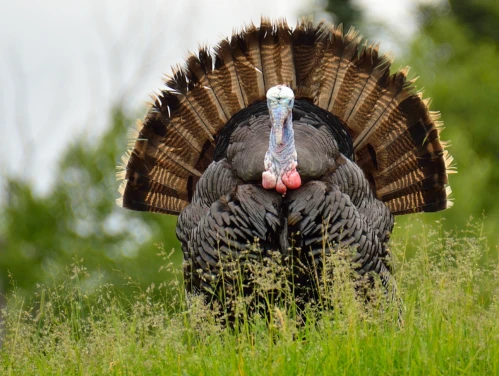On this page...
Back to top
Back to top
Wild Turkey Survey
Back to topTurkey Hunting
By the early 1900s, unrestricted market hunting and drastic reductions in habitat had eliminated wild turkeys in Iowa. For many years, the thunderous gobbles of the wild turkey were absent from Iowa's woodlands and forests.
This silence was broken in 1966 when the Iowa Conservation Commission, now the Department of Natural Resources, initiated a program to return the wild turkey to Iowa. Wild turkeys were released at several sites across the state, with the first release occurring in Lee County, Iowa.
Since these early days, turkey populations have expanded across the entire state of Iowa.
- Licenses for the Fall Season go on sale Aug. 15.
- Note: Nonresidents are not eligible for fall turkey hunting licenses.
- Licenses for the Spring Seasons go on sale Dec. 15.
- Gun shooting hours: half-hour before sunrise to sunset
- Bow shooting hours: half-hour before sunrise to 1/2 hour after sunset.
- Daily bag and season possession limit is one bearded or male wild turkey for each valid license and transportation tag issued to the hunter.
- Hunters who harvest a turkey are required to report that harvest by midnight on the day after it was tagged.
